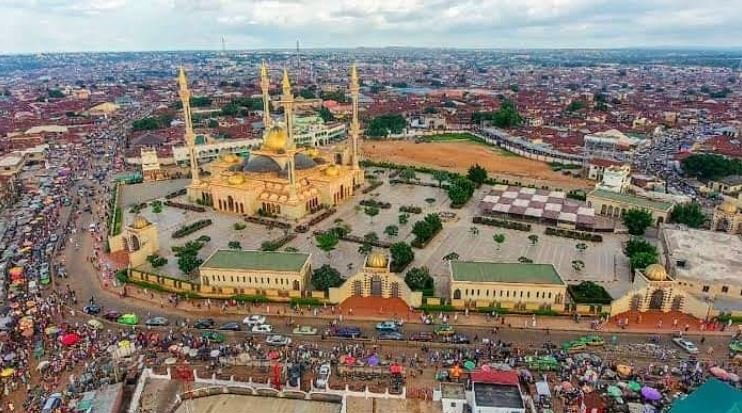This guide ranked Nigeria’s top 10 biggest Cities by land mass.
Rank | City | Total Area (km²) | State | Geopolitical Zone |
|---|---|---|---|---|
1 | Ibadan | 3,080 | Oyo | Southwest |
2 | Ogbomosho | 2,110 | Oyo | Southwest |
3 | Jos | 1,821 | Plateau | North Central |
4 | Abuja | 1,769 | Abuja | North Central |
5 | Benin City | 1,204 | Edo | Southwest |
6 | Lagos | 1,171 | Lagos | Southwest |
7 | Warri | 1,048 | Delta | South |
8 | Akure | 991 | Ondo | Southwest |
9 | Abeokuta | 879 | Ogun | Southwest |
10 | Ilorin | 765 | Kwana | North Central |
READ ALSO: Top 10 Largest Cities In Africa By Population
1. Ibadan – 3,080 km²
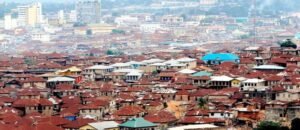
Ibadan is the largest city in Nigeria by landmass, covering a total area of 3,080 km². It is located in Oyo State in southwestern Nigeria. The city is about 129 kilometers northeast of Lagos and 530 kilometers southwest of Abuja, the capital of Nigeria.
It is one of the country’s largest and most historic cities. The name “Ibadan” comes from the phrase “Eba-Odan,” which means “by the edge of the meadow.” It was founded in 1829 as a war camp during a time of conflict in Yorubaland.
Since then, it grew into a major city and became the administrative center of the old Western Region during British colonial rule. Ibadan is home to a diverse population, mostly Yoruba people, but also includes communities like the Igbo, Hausa, and Edo.
The city became known as “Idi-Ibon,” meaning “gun base,” due to its strong military presence. Today, Ibadan is a vibrant metropolis with a population of over 3.5 million people as of 2024. It is also recognized for its contribution to Nigeria’s tech industry, ranking third in West Africa in the tech startups index.
2. Ogbomosho – 2,110 km²
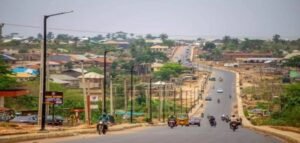
Ogbomosho is the second-largest city in Oyo State and one of the most populated cities in Nigeria. Ogbomosho covers an area of 2,110 square kilometers, making it one of the largest cities in the country by land mass.
The city is located at coordinates 8°08′N 4°15′E. Ogbomoso was founded in the mid-17th century and has grown from a small village into a bustling metropolis. It has a population of around 655,517 in 2024 and is the third most populated city in southwestern Nigeria, following Lagos and Ibadan.
Ogbomosho is home to the Ladoke Akintola University of Technology. However, the city has five local governments, and its economy is driven by agriculture, trade, and education.
Ogbomosho is famous for its historical significance, with notable events such as the involvement of its warriors during the Fulani wars in the 19th century. It also houses the sacred tortoise, Alagba, which is believed to be one of the oldest tortoises in Africa.
3. Jos – 1,821 km²
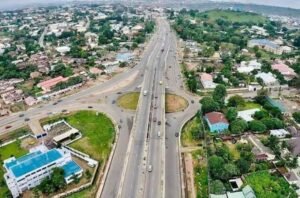
Jos is one of the largest cities in Nigeria by land mass, covering an area of 1,821 square kilometers. The city is located on the Jos Plateau, a mountainous area with scenic views.
Jos is known for its cool climate and beautiful landscapes, making it a popular tourist destination. With a population of around 900,000, it is one of the major cities in Nigeria.
It is a cosmopolitan city mainly due to the discovery of tin in the area, which attracted people from different parts of Nigeria, including the Hausa, Igbo, and Yoruba. However, the city is divided into two local government areas: Jos North and Jos South.
Jos North is the commercial and administrative center, while Jos South is known for its industries and institutions, including the National Institute of Policy and Strategic Studies and the Nigerian Film Corporation.
READ ALSO: Top 10 Historical Sites In Nigeria And Their Location
4. Abuja – 1,769 km²
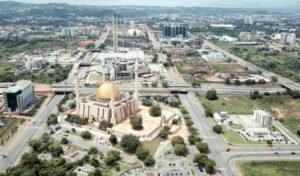
Abuja is the capital city of Nigeria, located in the Federal Capital Territory (FCT) at the geographic center of the country. It became the capital on December 12, 1991, replacing Lagos.
The city covers an area of 1,769 km², with the urban area alone being 927 km². Abuja is known for its planned structure and is one of the few purpose-built capital cities in Africa.
The city is famous for its landmarks such as Aso Rock, a massive 400-meter monolith, and Zuma Rock. Also, the National Assembly, Presidential Complex, and the Supreme Court are located there.
Abuja is home to a different population with rapid growth, estimated at around 3.7 million people in the urban area by 2022. The city is a major political, administrative, and diplomatic hub in Nigeria, with notable institutions such as the Nigerian National Mosque and the National Christian Centre.
In addition to being a government center, Abuja plays a part in regional affairs in Africa and has hosted several international conferences and meetings. It also has modern infrastructure, including the Nnamdi Azikiwe International Airport.
5. Benin City – 1,204 km²
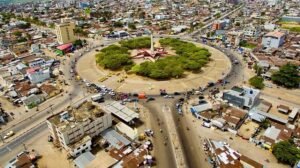
Benin City, located in Edo State, Nigeria, covers a total land area of 1,204 km² (465 sq mi), making it one of the largest cities in the country by land mass.
It is the capital and largest city of Edo State, located in southern Nigeria. The city is popular for its agricultural value, especially in rubber and palm oil production. It was once the seat of the powerful Edo Kingdom of Benin, which thrived from the 13th to the 19th century.
Benin City is a bustling metropolis with a population of around 1.5 million, ranking the fourth most populous city in Nigeria. The city is located about 40 km from the Benin River and approximately 320 km from Lagos, Nigeria’s largest city. Its economy is diverse, with agriculture and trade being prominent industries.
The city is also known for its advanced governance system and trade relations with Portugal in the 15th and 16th centuries. However, the British captured and destroyed the city in 1897, looting many cultural artifacts, including the famous Benin Bronzes.
6. Lagos – 1,171 km²
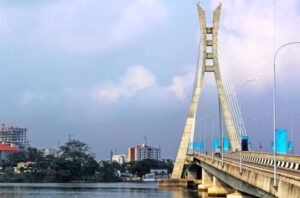
Lagos is the sixth largest city in Nigeria by land area, covering about 1,171 km². It is located in the southwestern part of the country, and it has a population that makes it the most populous city in Africa.
Originally settled by the Awori subgroup of the Yoruba people in the 15th century, Lagos has grown rapidly, expanding over the years to include both an island area and mainland areas. The city is a big center for Nigeria’s economy, commerce, and culture.
It was once the national capital until 1991 when the capital was moved to Abuja. Lagos remains a key financial hub, housing one of Africa’s largest and busiest seaports.
Also, Lagos is a cultural and entertainment center, influencing the music, fashion, and arts scenes in Nigeria and beyond. The land area of Lagos includes both urban and water zones.
Its urban areas, which include districts like Lagos Island and the mainland regions like Surulere and Ikeja, are constantly expanding as more people move to the city for work and better opportunities.
Lagos is also a transportation hub with a major airport, Murtala Muhammed International Airport, and infrastructure like the Lekki-Epe Expressway connecting different parts of the city. Despite challenges like traffic and overcrowding, Lagos continues to grow and thrive as one of the world’s fastest-growing urban areas.
READ ALSO: Who Built Central Mosque Abuja
7. Warri – 1,048 km²
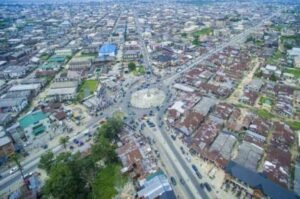
Warri is one of the largest cities in Nigeria by land mass, with an area of 1,048 km². Located in Delta State, in the South-South region of the country, Warri is a major oil hub.
It has a population of 363,382 in the urban area, while its metro area is home to about 1,043,122 people. The city is primarily inhabited by the Itsekiri, Urhobo, and Ijaw ethnic groups.
And, the main languages spoken in Warri are Pidgin English, Itsekiri, Urhobo, and Ijaw. Most residents are Christians, with a small percentage practicing African traditions and Islam.
Warri is a massive commercial center and serves as the administrative capital of Warri South Local Government Area. Warri’s economy thrives due to its modern seaport, which facilitates trade between the Niger River and the Atlantic Ocean.
This port is essential for imports and exports. Historically, Warri was the capital of the colonial Warri Province in the early 1900s. The city continues to grow rapidly, with neighboring towns like Udu and Uvwie forming a larger urban area known as “Warri.”
8. Akure – 991 km²

Akure is the capital city of Ondo State in Nigeria, located in the southwestern part of the country. It covers an area of 991 km² (383 square miles), and it is one of the largest cities in Nigeria by land mass. Akure’s population was estimated at 570,500 in 2011.
Akure is located at an elevation of 350 meters (1,150 feet) and is part of the tropical rainforest zone. The city has a mix of densely populated areas, like Arakale and Ayedun Quarters, and more sparsely populated districts like Ijapo Estate.
Also, the economy of Akure is based on agriculture, with cocoa, yam, cassava, maize, and tobacco being grown in the surrounding region. The city also has a lively trade culture, with an annual agricultural trade fair.
9. Abeokuta – 879 km²
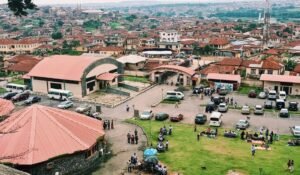
Abeokuta, the capital city of Ogun State in southwestern Nigeria, has a land area of 879 km². It is located along the east bank of the Ogun River, surrounded by rocky outcrops and a wooded savanna. The city lies about 77 km north of Lagos by railway and 130 km by water.
Abeokuta’s history is connected to its geography, particularly Olumo Rock, which provided refuge to the Egba people during wars and slave raids in the 19th century.
The city was officially founded around 1830. However, the economy of Abeokuta is based on agriculture and trade. Products include palm oil, yams, rice, cassava, maize, and shea butter. Cocoa and kola nuts are also exported.
Local industries include fruit canning, sawmills, breweries, and aluminum production. Abeokuta is a transportation hub, with roads connecting it to major cities like Lagos and Ibadan. The city also has a railway system, like the newer Lagos-Ibadan standard gauge railway.
READ ALSO: Top 5 Largest Mosques In Nigeria (2025 List)
10. Ilorin – 765 km²
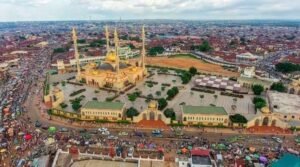
Ilorin, the capital city of Kwara State in Nigeria, is the tenth largest city in the country by land mass, with an area of 765 km². Ilorin is also known by its nickname, “Il-City.”
The city has a population of over 777,000 based on the 2006 census, though estimates suggest it has grown to about 1.5 million today. Founded in 1450 by the Yoruba people, Ilorin became a military headquarters for the Oyo Empire.
In 1817, Afonja, a commander in the Oyo Empire, led a rebellion with help from Mallam Alimi, a Fulani Islamic scholar. After Afonja’s death, Alimi’s son became the first emir, aligning the city with the Sokoto Caliphate.
During the 19th century, Ilorin grew as a trade hub, connecting the Hausa in the north with the Yoruba in the south. While resisting British colonization, Ilorin fell under British control in 1897. By 1900, it became part of the Northern Nigeria Protectorate, the only Yoruba city to do so.

